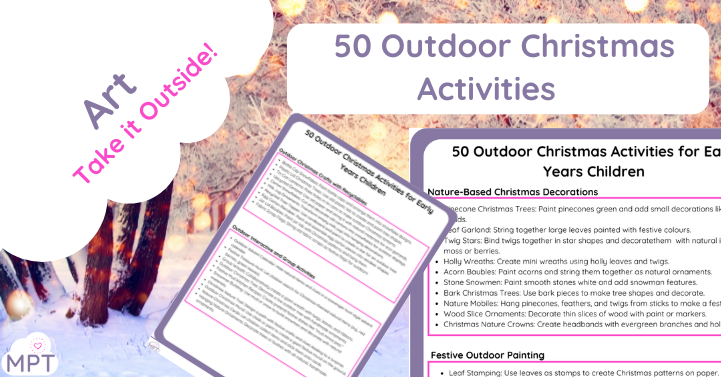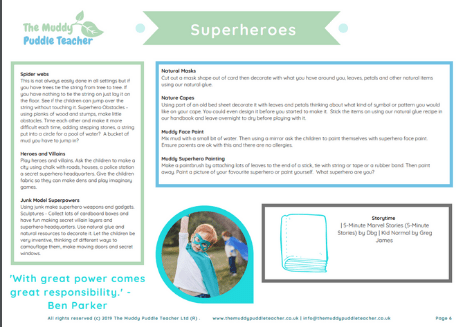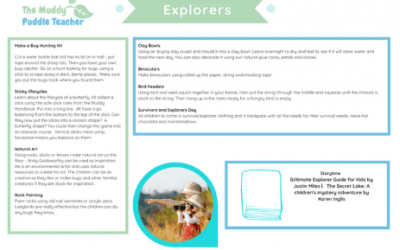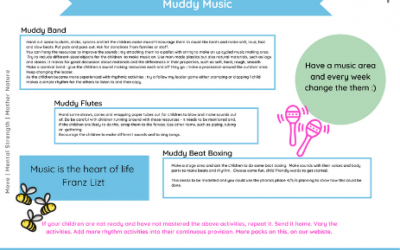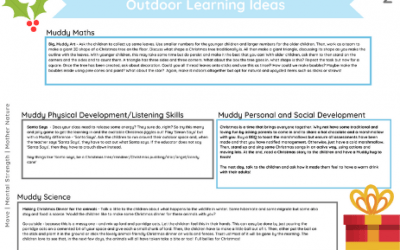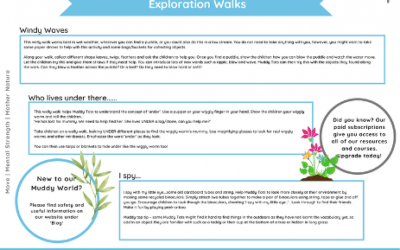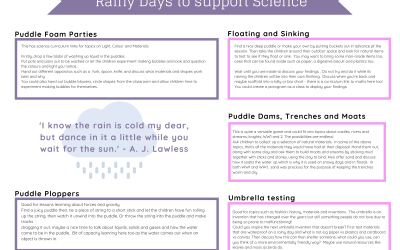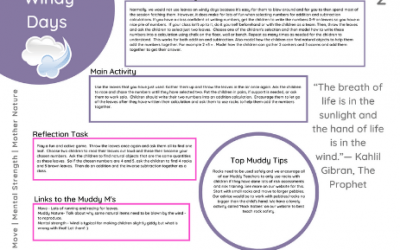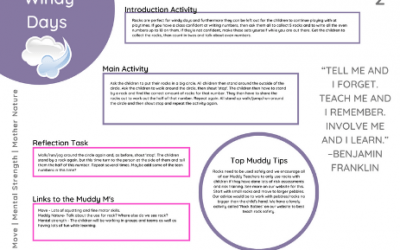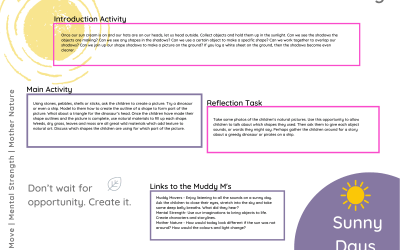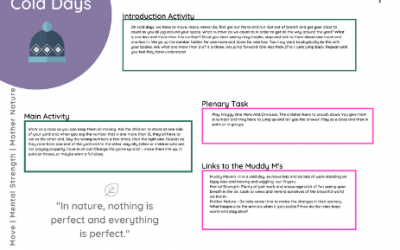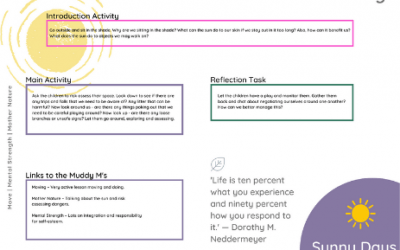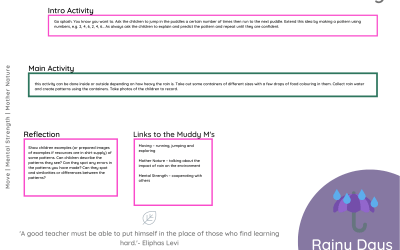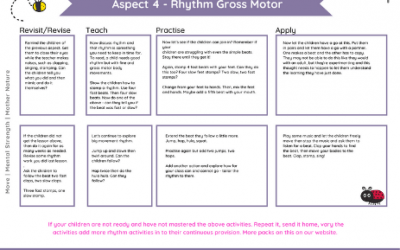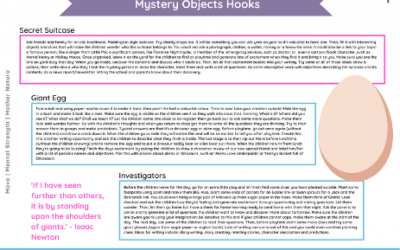Let us help you take more of this very popular topic outside! Use superheroes EYFS ideas pack to get your class active and using their imaginations the muddy way.
Early Years Outdoors Explorers
Jul 22, 2020
Ignite the children’s imaginations and try taking the topic ‘Survivors EYFS’ outside. This pack is full of curriculum-linked activities that will spark a lot of creativity for work once back in the classroom.
Early Years Outdoors Dinosaurs
Jul 22, 2020
Use Dinosaurs EYFS to help bring your planning to life with the help of a bit of mother nature. This pack will give you lots of ideas all dinosaur-related while still linking to your curriculum.
Rhythm Outdoor Continuous Provision Ideas
Jul 22, 2020
30 Minute Bug Craft Ideas
Early Years Easter Activities
Jul 22, 2020
Use Tots Welly Walks will get you and your little ones covering lots of physical development while linking in lots of learning. Learning while you walk.
Early Years Christmas Craft Pack
Jul 22, 2020
Use Tots Welly Walks will get you and your little ones covering lots of physical development while linking in lots of learning. Learning while you walk.
Tots Welly Walks
Jul 22, 2020
Use Tots Welly Walks will get you and your little ones covering lots of physical development while linking in lots of learning. Learning while you walk
Early Years Rainy Day Activities
Jul 19, 2020
Do you want to start taking more lessons out in the rain? Use this Rainy Day Activities EYFS Pack to promote key fine and gross motor skill practice through many innovative, creative and fun ideas
30 Outdoor Maths Activities
Jul 19, 2020
Want some fresh ideas on how to take Signs of Spring outside the muddy way? This pack will give you plenty of new ways to get outside using only natural and upcycled items.
Outdoor addition and subtraction
Jul 19, 2020
Use this Addition and Subtraction EYFS from our Muddy Maths range to help you teach more maths outside.
Early Years Halving
Jul 19, 2020
Are you struggling to add mastery to your maths? Muddy maths is the perfect way of doing this as well as getting your kids outside and active. Use this Shape EYFS Lesson Plan Pack to embed a deep understanding of shape and their properties.
Early Years Outdoor Shape – all-weather lesson plans
Jul 19, 2020
Shape EYFS | Muddy Maths
Early Years One more and one less
Jul 19, 2020
Take one more and less outside using natural materials and messy ideas!
Early Years negotiating Space
Jul 19, 2020
Use Repeating Patterns EYFS pack of ideas to use mastery within repeating patterns. This resource will save you time by giving you the ideas and the approach that has no prep time. Just go out there and teach the ideas and embed the learning.
Early Years repeating patterns
Jul 19, 2020
Use Repeating Patterns EYFS pack of ideas to use mastery within repeating patterns. This resource will save you time by giving you the ideas and the approach that has no prep time. Just go out there and teach the ideas and embed the learning.
Early Years Outdoor Counting Games (Numbers 0-10)
Jul 19, 2020
Do you want to save time? Make your teaching more cross curricula? This pack will help you teach Maths while the children get active and have exercise, using both their fine and gross motor skills.
Phase 1 Phonics Aspect 4/5/6/7
Jul 19, 2020
Phase One Phonics Aspect 4/5/6/7
Outdoor Writing Areas EYFS (Hooks)
Jul 19, 2020
Writing Hooks EYFSning about famous traditional fairytales.
New In
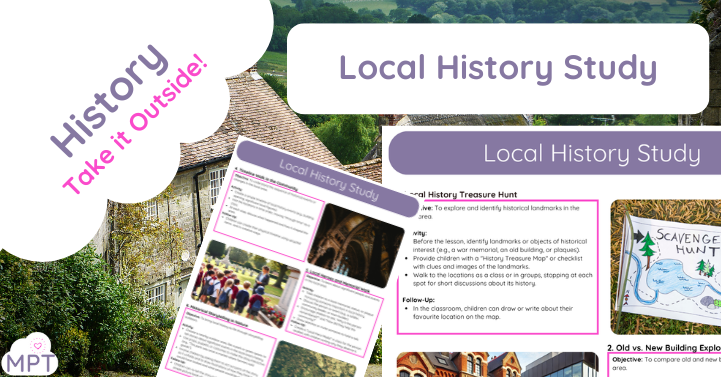
Local History Study

British Settlement by Anglo-Saxons and Scots Lesson Ideas

5 Sustainable Wreath Making Ideas

The Roman Empire KS2
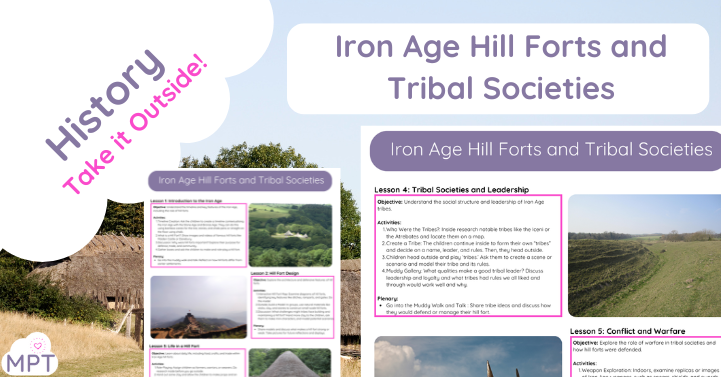
Iron Age Hill Forts and Tribal Societies
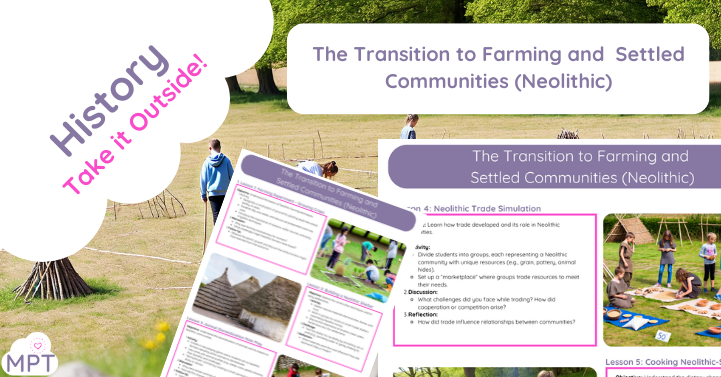
The Transition to Farming and Settled Communities (Neolithic)

Stone Age Recipes
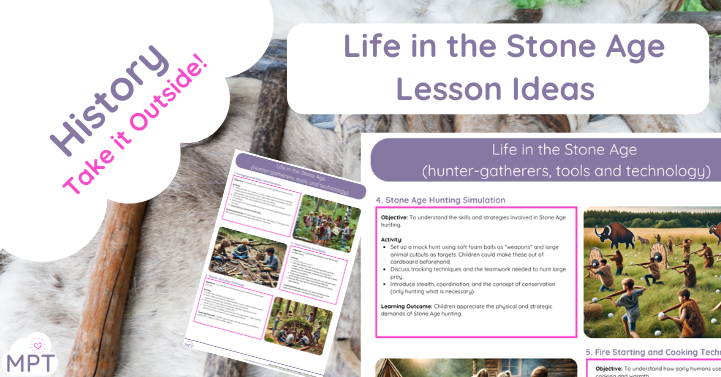
Life in the Stone Age Lesson Ideas
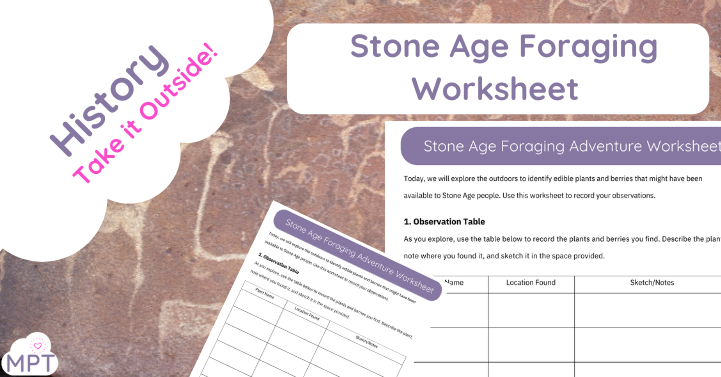
Stone Age Foraging Worksheet
